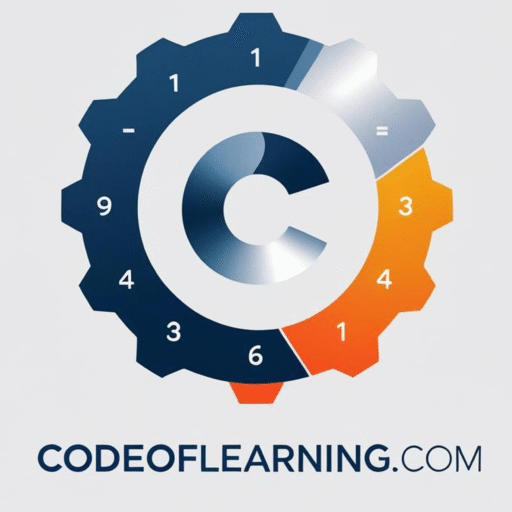Many places are excited about open-source AI. Researchers want better ways to work with data. They want tools that let them control their work.
In 2025, personal research agents will offer more freedom. They will let curious people go beyond what’s usual.
This change is towards tools made by the community. It makes people feel like they own their work. Open-source AI helps in doing real research. It lets users make their ideas better and get better results.
What Are Personal Research Agents?
Personal research agents are smart helpers for people in many fields. They use advanced language models like GPT-4. This helps them sort data and do tasks on their own.
Definition and Purpose
These agents collect lots of info and make it easy to understand. They help make projects run smoother by doing the boring parts. They also work with tools to keep things organized.
How They Enhance Research
They give smart tips and find hidden patterns in big data. Scholars use them to save time on hard tasks. This makes finding new things faster and still keeps the work accurate.
The Rise of Open-Source AI Tools
New breakthroughs in code sharing have changed how developers work on intelligence. Many projects on GitHub help teams make complex models cheaper. Users can also change and host AI for their own needs.
Benefits of Open-Source Solutions
Shared frameworks help innovation speed up. Experts around the world improve algorithms and share knowledge. This keeps everyone up-to-date with new analytics.
This open model also builds trust and learning together.
Popularity Among Researchers
Many researchers and startups use these platforms for new ideas. Open communities offer a lot of support for quick testing. Teams can make each function fit their needs without limits.
This way, they work together better, showing how self-hosted AI is key in today’s research.
Top Open-Source AI Tools for Research Agents
Projects using pre-trained models and community libraries change the game. They make AI research more flexible and powerful in many areas.

Tool 1: Hugging Face Transformers
Hugging Face Transformers works with models like BERT, GPT-2, and RoBERTa. It has a single API for PyTorch and JAX. This makes it easy to fine-tune models for tasks like text classification and translation.
Tool 2: Apache OpenNLP
Apache OpenNLP uses machine learning for text analysis. It’s great for tasks like language detection and named entity extraction. Its Java modules help build scalable pipelines for detailed text analysis.
Tool 3: TensorFlow
TensorFlow is key for big computations and deep learning. It supports neural networks for tasks like image recognition and object detection. It’s flexible for use on desktops or distributed systems, meeting AI research needs.
Features to Look for in AI Tools
When choosing AI tools, look for reliability, scalability, and resources. Llama vs GPT debates often focus on these. They show strengths in text generation and adapting to different areas.
Consider these key points:
- Parameter sizes for easy scaling
- Inference speed for big data
- Custom fine-tuning options
Stanford University’s work shows the value offlexible models. They adapt to many research goals.
Scalability
Scalability makes tools easier to handle as needs change. Systems that handle more data with little change are best. Teams can focus on deeper analysis with tools like Llama vs GPT.
Community Support
Active forums and groups help users learn fast. Good documentation saves time and solves problems. Platforms with strong communities adopt new tech quickly. This builds trust in AI’s future.
Integrating AI Tools into Your Research Workflow
Many teams want to make their work better by using flexible platforms. These platforms handle big datasets fast. They also let teams customize features and share tips with others.
Step-by-Step Integration Process
Researchers first figure out what they need, like text sorting or data pulling. Then, they pick an open-source AI that fits their goals. They test it in a safe place to check if it works well.
They keep checking and improving as they use it more. This makes sure everything goes smoothly.
Examples of Successful Implementations
Many places have made these tools work for them. A university used Hugging Face Transformers to speed up document checks. A biotech company used TensorFlow to find new patterns in genes.
These stories show how open-source AI helps teams be more independent. It encourages new ideas and breaks down barriers from closed systems.
User-Friendly Options for Beginners
Choosing easy-to-use tools is key for new researchers. They want fast results without a lot of setup. Familiar interfaces keep them excited to try new AI tools. This makes starting easier and sparks creativity.

Tool 4: Rasa
Rasa is an open-source tool that helps build chatbots with little coding. Its interface makes designing and managing chatbot flows easy. A big community supports Rasa with tutorials and help.
This focus on users makes Rasa great for those new to AI. It’s a reliable, practical tool for beginners.
Tool 5: Chatbot Frameworks
Chatbot platforms like Dialogflow or Botpress are perfect for new teams. They offer drag-and-drop tools, pre-trained models, and clear instructions. These tools make research projects easier and less complicated.
Beginners love the simplicity of these tools. They help explore new ideas in innovation.
Advanced Tools for Experienced Researchers
Seasoned teams look for tools that let them customize deeply. PyTorch and Grafana are great for experts who need to control every detail. They are part of a self-hosted AI setup, giving users full control over data.
Tool 6: PyTorch
PyTorch is from Meta (Facebook) and is loved for its flexibility. It has a dynamic computation graph that makes changing models easy. Many top places use it for their most advanced projects because of its strong community support.
Tool 7: Grafana
Grafana is top for making dashboards that show real-time data. It works with many data sources, helping users see how things are doing in different places. It’s key for teams to find and fix problems, helping them grow their systems.
Comparing Open-Source AI Tools
Teams look at accuracy and how well tools integrate when choosing AI tools. Some want frameworks that work well with big datasets. Others seek libraries with many pre-trained models and easy workflows.
Good performance often means tools that use GPU and parallel processing well.
Performance Metrics
TensorFlow is great for text tasks and classification. PyTorch is known for its flexible graph and easy debugging. Scikit-learn is top for data analysis tasks like regression or clustering.
Apache MXNet helps with big experiments by training in parallel. Microsoft’s Cognitive Toolkit has strong debugging tools. How well a tool works depends on the hardware, coding, and the task.
Usability and Interface
These tools vary in how easy they are to use. Some focus on simple interfaces and good support. TensorFlow and PyTorch make it easy to try models.
Scikit-learn’s consistent code helps with quick tests. MXNet’s design meets many programming needs. Each tool tries to be easy to use for faster AI research.
The Future of Open-Source AI Tools
In 2025, open-source AI tools focus on complete systems, not just models. Anastasia Stasenko, co-founder of Pleias, says that having everything together makes things easier for teams. This change helps developers work better together and come up with new ideas.

Llama vs GPT shows the difference between community efforts and big company plans. Open-source uses shared knowledge, while big companies spend a lot on marketing. Both help AI grow, but in different ways.
Trends to Watch
Companies are making models for specific areas and chatbots for certain places. These tools understand local cultures better and give accurate answers. They also use less power, saving money without losing quality.
Predictions for 2025
We’ll see tools that can handle text, images, audio, and video together. These tools will also focus more on what users want, like keeping data safe and being clear about AI choices. Some benefits include:
- Customizable and flexible settings
- Good documentation and easy to use
- Support from active communities
For more info, check out open-source AI agent alternatives. They work with many LLMs and keep data safe. Keeping up with these can help AI grow or stop.
Community Contributions and Collaboration
Researchers, developers, and fans work together to make open-source AI better. They share code, report bugs, and help set good practices. This teamwork leads to quick updates and new ideas, making things better all the time.
Importance of Community in Open Source
Volunteers add energy to projects with their ideas and feedback. GitHub shows how teamwork can add important features fast. It also helps everyone learn and grow, keeping things exciting and united.
Notable Community Projects
Projects like Langchain and Rasa show how many hands can make a difference. They get better with help from hundreds of people. Events and bug bounties also help, making things better and faster.
Funding and Resources for Development
Many open-source projects do well with the right funding. Charities and government agencies often support projects that help society. This support lets developers improve their work, keep things running smoothly, and test thoroughly.
Grant Opportunities
Foundations, governments, and groups worldwide help projects that promote new ideas. They focus on areas like education and healthcare. This opens doors for those working on AI tools to find funding.
Platforms for Support
People and groups can help out on sites like GitHub Sponsors or Patreon. This way, everyone can see how the project is doing and talk directly with supporters. Working together, universities, nonprofits, and tech companies help small teams grow. With ongoing support, AI tools can make a big impact worldwide.
Conclusion: Choosing the Right Tool for You
Every open-source AI platform has its own strengths and challenges. Deep-Research makes its own search queries to find deep data. OpenDeepResearcher runs many analyses to catch every detail. Open Deep Research lets users choose any language model they like.
DeepResearch by Jina AI uses a multi-engine strategy for big tasks. Some tools, like Rasa or PyTorch, work well as self-hosted AI frameworks. This gives more control over privacy and updates.
Teams wanting a quick start might like tools with easy setups or strong guides.
Recap of Key Points
Researchers should match their goals with each tool’s features. Community activity, ease of integration, and advanced functions all shape the final decision.
Final Recommendations
Think about data security, project scope, and your skills. Self-hosted AI platforms offer more control over sensitive data. Open-source communities provide constant support and new ideas.
Exploring these resources can help personal research agents grow. They can enter a world of sustainable innovation.

